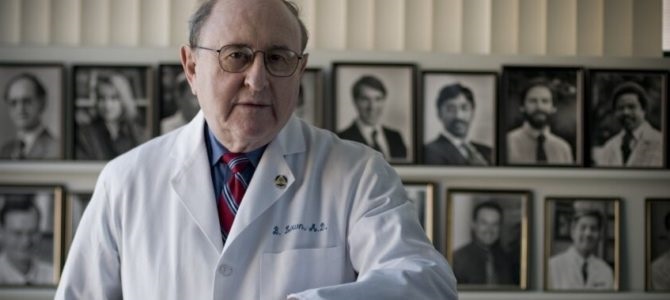The city of Utena in northeast Lithuania has a new piece of public art, a bronze heart, to recall the birth there of Bernard Lown, Nobel prize winner and famous cardiologist who invented the defibrillator.
The statue comes as part of a project by cultural historian Sandra Dastikienė called “Old Neighbors” intended to bring public attention to the Jewish community’s legacy in the Utena region.
“To heal communication between the Lithuanian and Jewish peoples, we have to start at the grassroots level, from the culture of the small towns or shtetls, where both separate communities lived together in peace for centuries. It was that, namely neighborliness, that I want to emphasize with my project in Utena, Anykščiai, Molėtai and Dusetos,” Dastikienė said.
Lown was born in Utena on June 7, 1921, to a family of Jewish merchants. Fearing growing anti-Semitism and seeking a better life for their children, his parents took the family to the USA in 1935. Bernard Lown studied medicine there and was graduated in 1945. He passed away earlier this year in February at the age of 99.
Initially Lauryna Kiškytė, the jeweler and artist in metal who was entrusted with carrying out the artistic part of the project, thought about a portrait to commemorate Lown in the town of his birth. After listening to hours of the interviews with the man, she changed her mind and decided a heroic representation wouldn’t work with this subject. She decided to look instead a the object of his life’s work, the scientific investigation of the heart. Choosing the heart itself as the proper way to remember Lown, she was then faced with the problem of how to portray the heart in an interesting way.
The cast bronze work became a heart whose aortas are intertwined with floral motifs. “The cardiologist starting talking about ecology at a very early period, about our responsibility for the planet and the specific place where we live,” Kiškytė said. She said the statue is intended to be touched, and that Lown himself used to say touch was the primary sense.
Lown received the Nobel peace prize in 1985 in collaboration with Soviet doctor and medical researcher Yevgeni Chazov on behalf of their organization International Physicians for the Prevention of Nuclear War.


